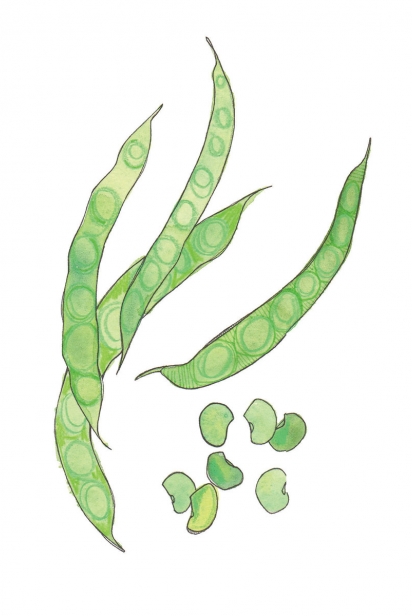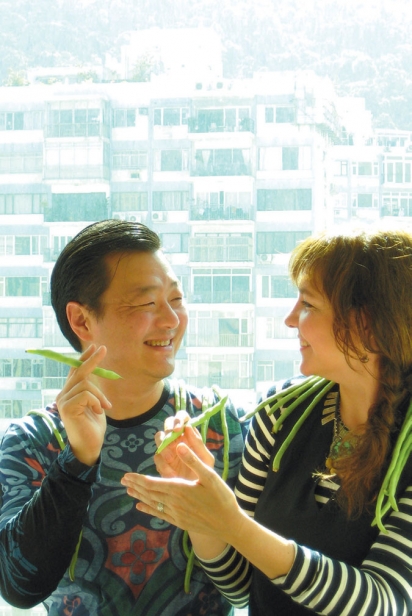Treatise on Bean Shelling: Pods Packed With Memories
Proust had his madeleine. Nothing sends me space- and time-traveling like shelling beans. Or rather bean shelling, as I like to call it. It’s an inherited pastime like bird watching or guitar playing, a family casual summer affair fossilized in my memory by the experience of immigration and turned into a personal meditative ritual.
You’ll find me bean shelling in Hong Kong, where I live part of the year; in South Bend, Indiana, where I live the rest of the time; but mostly in the south of France where I shelled my very first beans for a traditional soupe au pistou (pesto soup) around the family table with my siblings Olivier, Agnés and Nadège; my mother, Maman Geneviève; and my grandmother Mamie d’Arles. I had never shelled beans before, so when my mother announced that we were to “écosser des haricots” (shell beans) I was puzzled. “Écosser” (to shell) is not used much as a verb in French except for bean shelling. What confused me was that the verb “écosser” sounds like its near-homophone “Écossais” (Scottish). So, as I sat around the long oak table facing the large enameled bowls and the piles of multi-colored beans, I was wondering what my mother meant by “Scottishizing” beans.
“Cosse” stems from the Latin “coccia,” hull or shell, says the dictionary, and “coccia” stems from “cochlea,” a spiral-shaped shell or snail. Cool beans! I get it. Thanks to the dictionary, I now had the X-ray vision of a gargantuan snail digesting a conch shell, like the snake who swallowed an elephant in Saint-Exupéry’s The Little Prince. We’re gonna ex-shell ourselves some beans, I tell my little sister. Ex-shell, de-pod, dis-shell, un-pod, disrobe, de-cockle, de-snail some beans. Désescargoter les haricots.
“Les Haricots,” says my mother, “not les Zaricots. You need to mark your h in haricots, Anne.” Man! I used the dictionary twice already and I haven’t shelled my first bean. More often that not, the letter h is silent in French, but not in haricot, where it acts as a separating membrane between the first vowel sound of the word haricot—a— and the preceding sound. It’s really too bad because if you could drop the h here, you would say “lézaricots,” which itself sounds like “lizard Iko.” Let’s de-cockle that little lazy Iko bum.
Anne is getting too excited about shelling beans, says my mother. Why don’t you draw for us. Do a bit of calligraphy. Anne likes calligraphy, says Maman to Mamie d’Arles. So, I do. I roll out a sheet of paper, uncap my felt pen and write “aricots,” each letter looking like a round, little bean gem and wrapping itself around them is a thick and waxy, pod-like, cursive h. Reaching for the h are two little fingers getting ready for some serious bean-shelling action.







